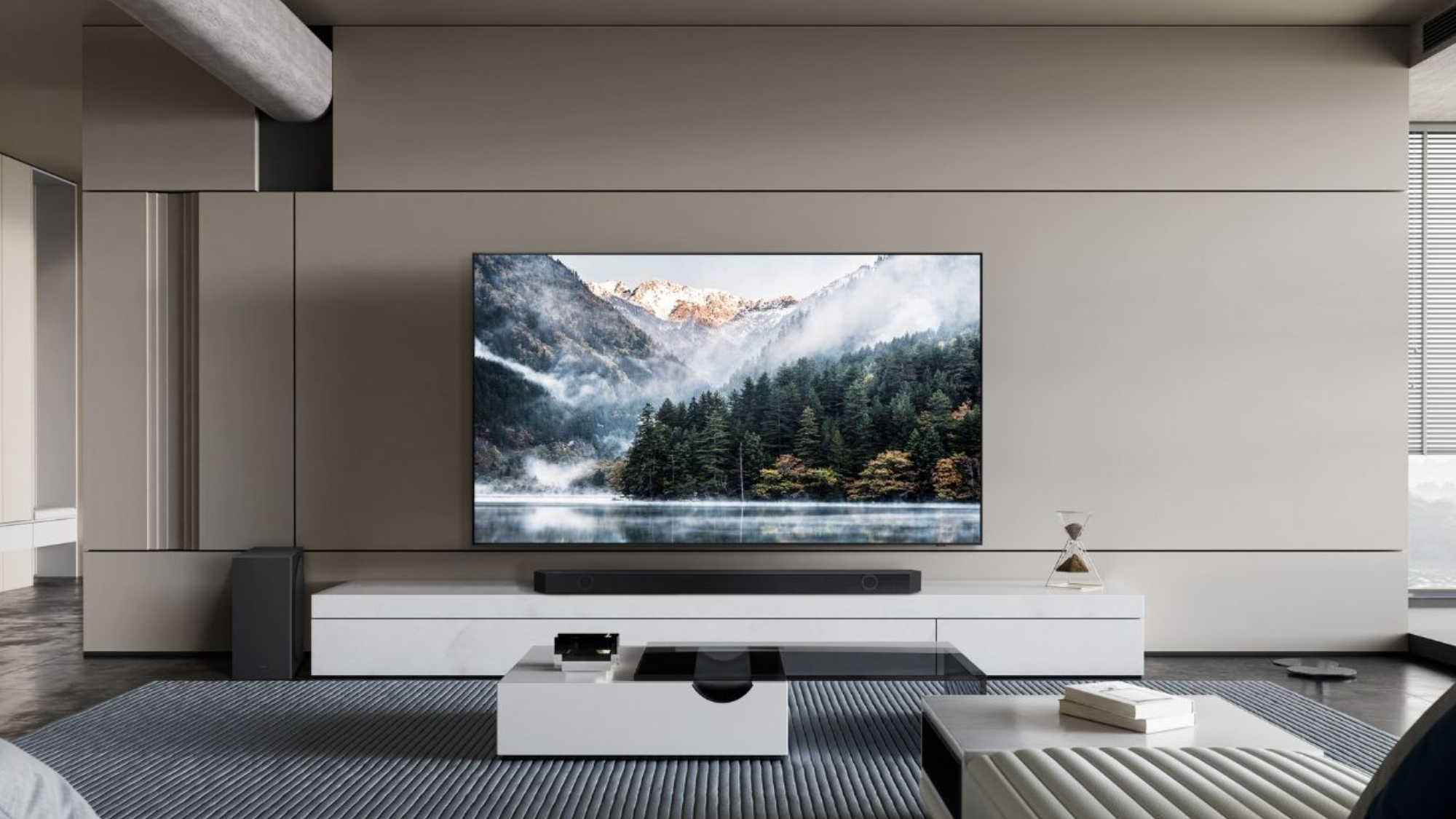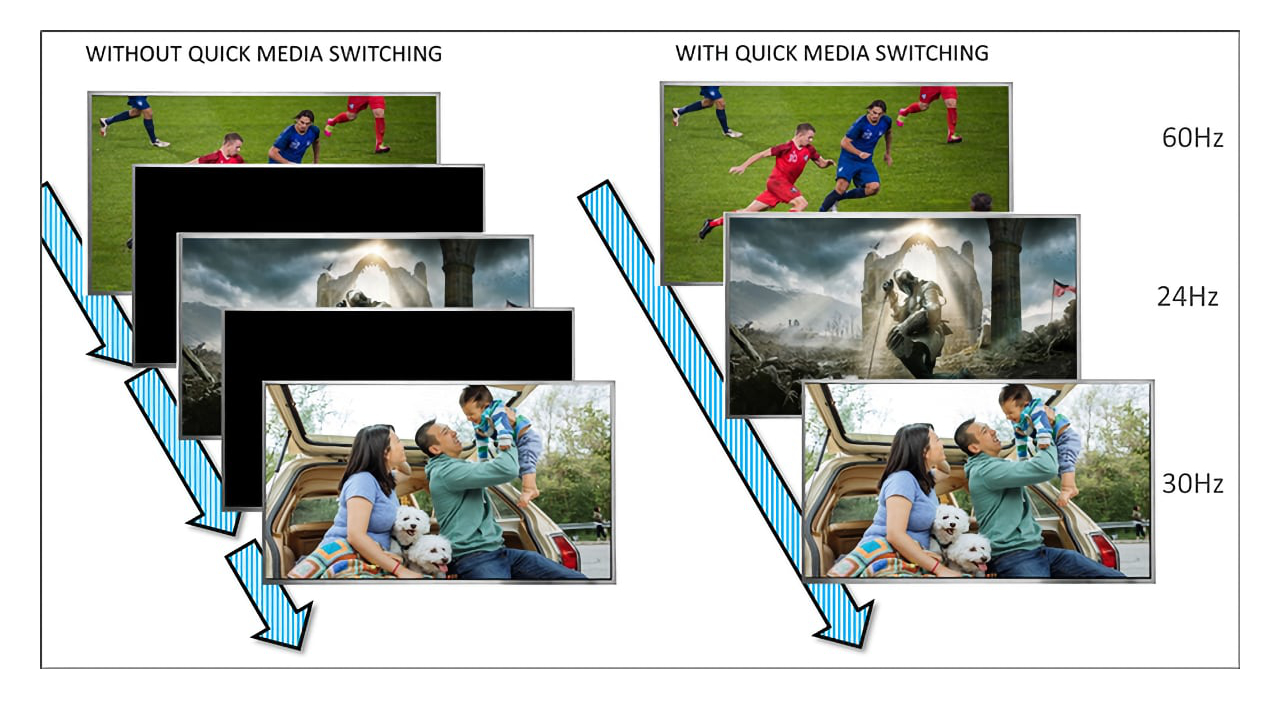
Samsung’s flagship OLED TVs from this year and last year seemingly now have support for Quick Media Switching (QMS), an interesting new function built on the HDMI 2.1a design.
FlatpanelsHD broke the news following a recent review of the Samsung S95D OLED TV, the star stunner amid the 2024 Samsung TV lineup. QMS essentially pertains to a seamless switch between refresh rates in varied content without a jarring black screen that cuts between them, often referred to as an “HDMI bonk.”
On the surface it might seem rather rudimentary, but it's actually quite a remarkable feat that was first introduced on LG's 2023 TV lineup. It's barely noticeable to most users, but allows for judder-free when switching between content sources, like a 50fps TV show and 24fps movie.
According to FlatpanelsHD, QMS is only available thus far via a compatible HDMI 2.1a media player, which is the Apple TV 4K from 2022. The QMS feature itself is currently also only accessible on the S95D and Samsung S95C OLED TVs.
What is Quick Media Switching

Quick Media Switching, or simply QMS, is a streamlined method built on the HDMI 2.1a design that allows a TV to switch between differing refresh rates across varied content without skipping a beat. Although very subtle and often going unnoticed for most, when switching between these modes a black screen will pop up, essentially restarting the refresh rate.
But with QMS, the content stays fluid and you won't experience this "HDMI bonk" as it's often referred to. QMS seamlessly leverages VRR (Variable Refresh Rate) to ensure such content switching, like between a TV show that's 60fps and a movie that's 24fps, without any lag or judder.
The function does not work when switching between HDR and standard content, though, just different refresh rates. And, as of yet, it's currently only available on the two Samsung OLED TVs, and even then specifically when connected to the Apple TV 4K, which remains one of the best streaming devices on the block.
It can also be found on the 2023 and 2024 LG TV lineups, including the LG C3 OLED. Again, you will need the Apple TV 4K for it to function properly, though. It's unclear if the function will show up in a wider range of streaming dongles, like those among the best Roku devices, but VRR and HDMI 2.1a compatibility are definitely required.
According to a year-old FlatpanelsHD article, several TV distributors voiced opinions on the QMS function, particularly LG and Sony. In regards to Sony, it said to Flatpanels that "QMS VRR will not be supported. The future plan is TBD." LG simply stated that older TVs would not be getting it, but does seem to support it in all the latest OLED TVs. For now, it seems just Samsung and LG will be the only providers at this time to support QMS (and Philips TVs outside of the US).
My take? It's great to see this specific HDMI 2.1a feature included on two of the best Samsung TVs in the market, but where it will find a home next is anyone's best guess.







